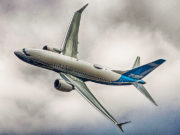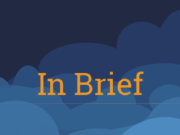Representatives from nine civil aviation authorities from around the world will join the technical review panel established by the U.S. Federal Aviation Administration (FAA) to review the certification of the Boeing 737 MAX’s automated flight control system.
The FAA said Friday that the Joint Authorities Technical Review (JATR) team — announced in the aftermath of the second fatal crash of a 737 MAX in five months — would “evaluate aspects of the 737 MAX automated flight control system, including its design and pilots’ interaction with the system, to determine its compliance with all applicable regulations and to identify future enhancements that might be needed.”
The first of the two accidents involved Lion Air Flight 610, which crashed into the Java Sea after takeoff from Jakarta, Indonesia, on Oct. 29, 2018, killing all 189 passengers and crew; the second accident involved Ethiopian Airlines Flight 302, which crashed after takeoff from Addis Ababa, Ethiopia, on March 10, killing all 157 passengers and crew. In both cases, the accident airplane was a 737 MAX 8.
Civil aviation authorities worldwide subsequently grounded all MAX airplanes while Boeing worked on a software update intended to help prevent another similar crash.
In both accidents, preliminary information indicated that the airplanes experienced what Ethiopian accident investigators called multiple “uncommanded nose-down conditions” and that the pilots were unable to pull the aircraft’s nose back up. Preliminary findings focused on a new feature known as the maneuvering characteristics augmentation system (MCAS), which was designed to enhance the airplane’s pitch stability.
The JATR’s first meeting is scheduled for April 29, and the panel’s work is expected to continue for 90 days.
In addition to representatives of the FAA and the U.S. National Aeronautics and Space Administration, other experts on the JATR will include participants from Australia’s Civil Aviation Safety Authority, Brazil’s Agência Nacional de Aviação Civil, Transport Canada Civil Aviation, the Civil Aviation Administration of China, the European Union Aviation Safety Agency, the Japan Civil Aviation Bureau, the Indonesia Directorate General of Civil Aviation, the Civil Aviation Authority of Singapore, and the General Civil Aviation Authority of the United Arab Emirates.

